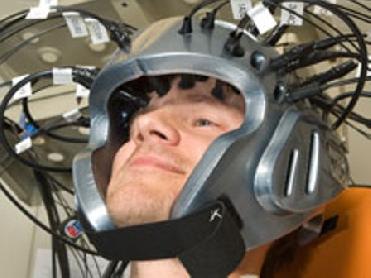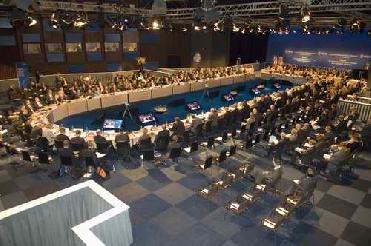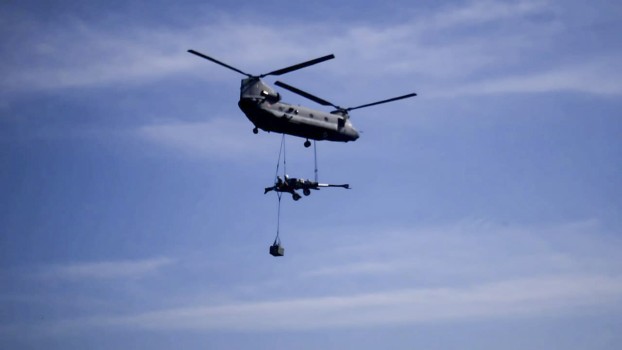
Test subject Maciej “Mac” Zborowski wears headgear with optical sensors to measure his brain activity. Credit NASA
WASHINGTON (BNS): In a move to understand the stress levels under which airplane pilots operate, NASA is monitoring brain activity.
According to NASA, in the studies being conducted at the Glenn Research Center in Cleveland, scientists are employing functional near infrared spectroscopy, also known as fNIRS, and other imaging technology to measure blood flow in the brain's cortex and the concentration of oxygen in the blood. This emerging technology offers a non-invasive, safe, portable and inexpensive method for monitoring indicators of neural activity.
Scientists are hopeful that through studies, they would be able to find ways to improve the interaction between the increasingly sophisticated automation being used in aircraft and the humans who operate it. The goal is to aid pilot decision-making to improve aviation safety, the agency said.
NASA biomedical engineer Angela Harrivel who is leading the team of scientists said, no matter how much training pilots have, conditions could occur when too much is going on in the cockpit. "What we hope to achieve by this study is a way to sensitively -- and, ultimately, unobtrusively -- determine when pilots become mentally overloaded," she said.
��Flying an aircraft involves multitasking that potentially can push the limits of human performance. When we increase stress and difficulty we can see how the subject reacts, measuring brain activity during overload."
Harrivel and the team work after donning a headgear fitted with optical or electrical sensors and sat in a moving cockpit simulator that creates the sensation of flying. The tests measure electrical activity in the brain to validate spectroscopic data obtained through the fNIRS sensors.
The volunteers perform basic functional tasks and participate in more complex flight simulations. Future tests will challenge the subjects with stress-inducing conditions as they use a joystick and flight instruments to try to stay 'airborne' in the simulator, NASA said.
 Previous Article
Previous Article Next Article
Next Article













The Indian Air Force, in its flight trials evaluation report submitted before the Defence Ministry l..
view articleAn insight into the Medium Multi-Role Combat Aircraft competition...
view articleSky enthusiasts can now spot the International Space Station (ISS) commanded by Indian-American astr..
view article